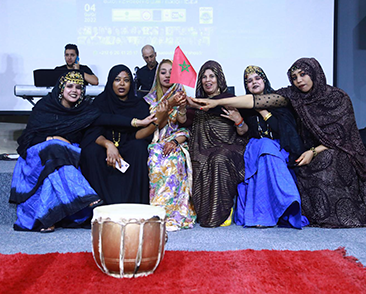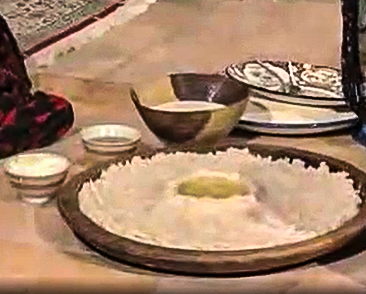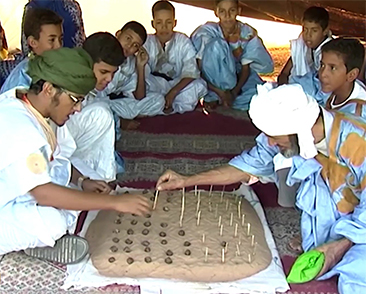
Sahrawi Tea: Discover the Special Drink in Morrocan sahara
The Sahrawi tea is a must-have beverage in the Sahara, consumed both on a daily basis and on special occasions. Let’s discover the special rituals and traditions of this unique drink!
Sahrawi tea, also known as "Sahrawi atay," is a traditional drink that no Sahrawi home is complete without. Serving tea to visitors is the cornerstone of a warm Sahrawi welcome.
Sahrawi tea rituals and traditions
Tea preparation in the desert has its own rituals and timings. It is difficult for the Sahrawis to have a gathering or conduct a meeting without brewing tea. Thus, tea drinking traditions and rituals have scarcely evolved and are deeply established in Sahrawi society.
Because of the Saharawis' high regard for precious tea, they developed various drinking rules. The rules are named djimaat talat (the three djims) as they are enumerated in three words, each beginning with the Arabic letter djiim.
The first rule is the djer, in Hassaniya dialect, the language of Moroccan desert dwellers. Djer refers to the amount of time it takes to prepare tea so that the tea's components steep and soak up the water, resulting in a dark-colored drink with a distinct flavor.
The second rule, djamr (coal), emphasizes the importance of preparing the teas over embers or djamr that has cooled to the point of being near to ash. The final rule is that of the community or djemaa, without which the Sahrawis do not recognize the need for tea.
According to Sahrawi traditions, tea is drunk in three glasses. After the first is finished, the tea leaves are kept inside, then water is added to it, and the second serving is prepared, then the third.
Each of the three glasses is given a unique name, with the first being called al-qasah (fortified) due to its high tea content. The second is referred to as motawasit (medium) due to its reasonable concentration, whilst the third is called helo (sweet) because it has a lot of sugar added to it along the process, giving it a stronger flavor than the tea.
Because one of the health advantages of tea is that it improves digestion, the Sahrawis preferred to drink tea after fatty meat dishes.
Sahrawi tea tools
The preparation of Sahrawi atay requires a specific set of tools and materials. To begin, there is the tabla, which is a spherical tray with three legs and is frequently made of silver or copper. There are also cups to consider. In the desert, there is a unique sort of cup known as kisan al-wakh, which are shorter tea glasses than frequently seen in northern Morocco. The teapot or al-berrad is made of a metallic substance called tasmimt that can withstand hot coals.
The set for storing the tea ingredients is also very important for the ceremony. It traditionally consists of two containers: "al-rabi'ah" used for the sugar, and "zanbeel" for the tea leaves.
Finally, there's al-ghalay, which is a large jug used to boil water, and al-raabuz, which is a traditional hand pump used to ignite charcoal by blowing on it. Also, al-majmar, which is a censer made of clay that holds the coals. In the past, Sahrawis were using lfirna instead of this censer.
Sahrawi tea preparation
The procedures of making Sahrawi tea are meticulously detailed and can take up to two hours. While Morocco's famous beverage is mint tea, Sahrawi tea draws its unique and strong flavor from the elaborate brewing ritual.
The first step is the boiling of water, ideally al-ghadeer (rainwater). The tea leaves or al-warka are then placed in the teapot, which is then filled with only a cup of hot water and set aside.
After about five minutes, the brewed liquid is poured into a beaker, which is called al-damaa. Then, the boiling water is poured again into the jug or al-berrad with the tea leaves already added. After being stirred well, the tea is poured into a glass known as the kas tshlila, which is a process known as tshlal atay.
The teapot is then filled with water and placed over the embers until it boils thoroughly. The last step is adding sugar and al-elk (Arabic gum), which is used to give the tea more foam to make the tea finally ready to be served.
Sahrawi tea is very known for its lush foam. Thus, in order to get that foam when pouring the tea, the first liquid, al-damaa, is poured between the cups.
Al-qiyam - the Sahrawi tea maker
Because being awarded the duty of brewing tea to a group member is an honor for Sahrawis, the tea maker, known as al-qiyaam, is chosen based on specific criteria.
Among the Sahrawi tea maker’s duties is the proper handling of tea preparation tools, providing properly-cooked cups of tea, maintaining the cleanliness of the tea tray or tabla, and refraining from excessive standing and sitting as well as exaggerated movement and speech.
Sahrawi tea is a must-have drink for all Sahrawis, as well as a symbol of affluence and charity. In Sahraoui culture, serving tea is more than simply a local custom; it is a gesture of generosity, kindness, and hospitality.



